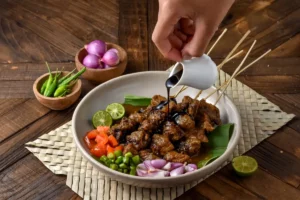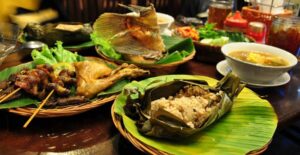Culinary has become an inseparable part of modern human life. Not just the activity of cooking or eating food, culinary is an art and science that has a very broad scope. From street stalls to luxury restaurants, all are connected in one concept that we know as the culinary world.

In its development, culinary is a field that continues to develop along with the progress of civilization. Starting from simple cooking methods millions of years ago to modern techniques that we know today, the culinary world continues to experience significant evolution. This transformation not only includes the method of processing, but also includes aspects of presentation, nutritional value, and the philosophy behind each dish.
To understand more about what culinary is, let’s explore the various important aspects that shape the culinary world as we know it today, as summarized by Liputan6.com from various sources, Thursday (12/26/2024).

Understanding the meaning of culinary as a whole is very important considering that this term is often used in everyday life. Although many people use the word “culinary” to refer to food or eating activities, the definition of culinary actually has a much broader and more complex scope.
Culinary is a term derived from the English word “culinary” or the Latin word “culinarius” which means everything related to the kitchen or cooking activities. In a broader sense, culinary is the art of preparing, processing, and serving food by paying attention to various aspects such as cooking techniques, presentation aesthetics, and nutritional value. This field not only includes the cooking process itself, but also the selection of ingredients, processing techniques, and how to serve food that can pamper the taste buds.
In a modern context, the definition of culinary has developed to include various broader aspects. Culinary is no longer just about cooking, but also includes an understanding of the characteristics of food ingredients, nutritional principles, storage techniques, hygiene, and cultural and social aspects inherent in each dish. Even in the professional world, culinary also includes kitchen management, menu development, and innovation in creating new dishes.
Furthermore, culinary is also closely related to the cultural identity of a region or country. Each region has unique cooking techniques, spices, and presentation methods, which reflect the richness of the culture and history of each region. This makes culinary one of the important aspects in the preservation and development of cultural heritage.
Thus, it can be concluded that culinary is a complex and multidimensional field, which does not only talk about how to cook, but also includes aspects of art, science, culture, and social that are interrelated. A deep understanding of culinary can help us appreciate not only the food we eat, but also the process and values contained in it.
The journey of culinary history is a fascinating story that tells the evolution of humans in processing food. From the discovery of fire to modern technology, culinary history reflects how human civilization developed and how food became more than just a basic need for survival.

The history of culinary began about 2 million years ago when ancient humans began to recognize fire and its use for cooking meat. Anthropologists, including Richard Wrangham in his book “Catching Fire: How Cooking Made Us Human”, put forward various theories about how humans first discovered cooking techniques. Some argue that ancient humans accidentally discovered the deliciousness of meat roasted in a forest fire. This discovery then developed into simple experiments such as throwing raw meat into the fire and observing the changes.
The development of culinary took a big leap with the discovery of clay and stone tools. This discovery, coupled with human success in domesticating livestock and advances in agriculture, opened up new possibilities in food processing. In the early days of civilization, cooking skills became a highly valued skill, especially in the palace environment. Professional chefs at that time only served kings, nobles, and priests. This difference between cooking for the elite and the common people is what gave birth to the various dishes or culinary traditions that we know today.
Entering the end of the Renaissance, culinary arts in the Western world began to develop as a more structured skill. Previously, chefs worked in palaces, cooking for kings and queens and their families and guests. As the monarchy faded, these chefs brought their membership to inns and hotels. From the beginning, culinary developed into a more formal field of study.
Before formal culinary institutions existed, professional chefs transferred their knowledge through apprenticeships. A major turning point in the history of culinary education occurred in 1879 with the founding of the first cooking school in the United States, the Boston Cooking School. This school pioneered the standardization of cooking practices and recipes, and laid the foundation for the development of modern culinary schools.
Culinary development has continued into the modern era, where technology and globalization have had a major impact. There are no longer clear boundaries between Eastern and Western cuisines in the modern international market. Today’s culinary students are introduced to cuisines from cultures around the world, creating new fusions and innovations in the culinary world.

Looking at this historical journey, we can understand that culinary is a reflection of the evolution of human civilization. From simple cooking methods to sophisticated techniques, from knowledge passed down orally to formal education, culinary continues to evolve along with technological advances and cultural exchanges between nations. Understanding this history is essential to appreciating the culinary heritage of the past while continuing to innovate for the future.
